Music of the Chicano Movement
Lesson Hub 7:
The Power of Protest:
Songs of Struggle and Hope
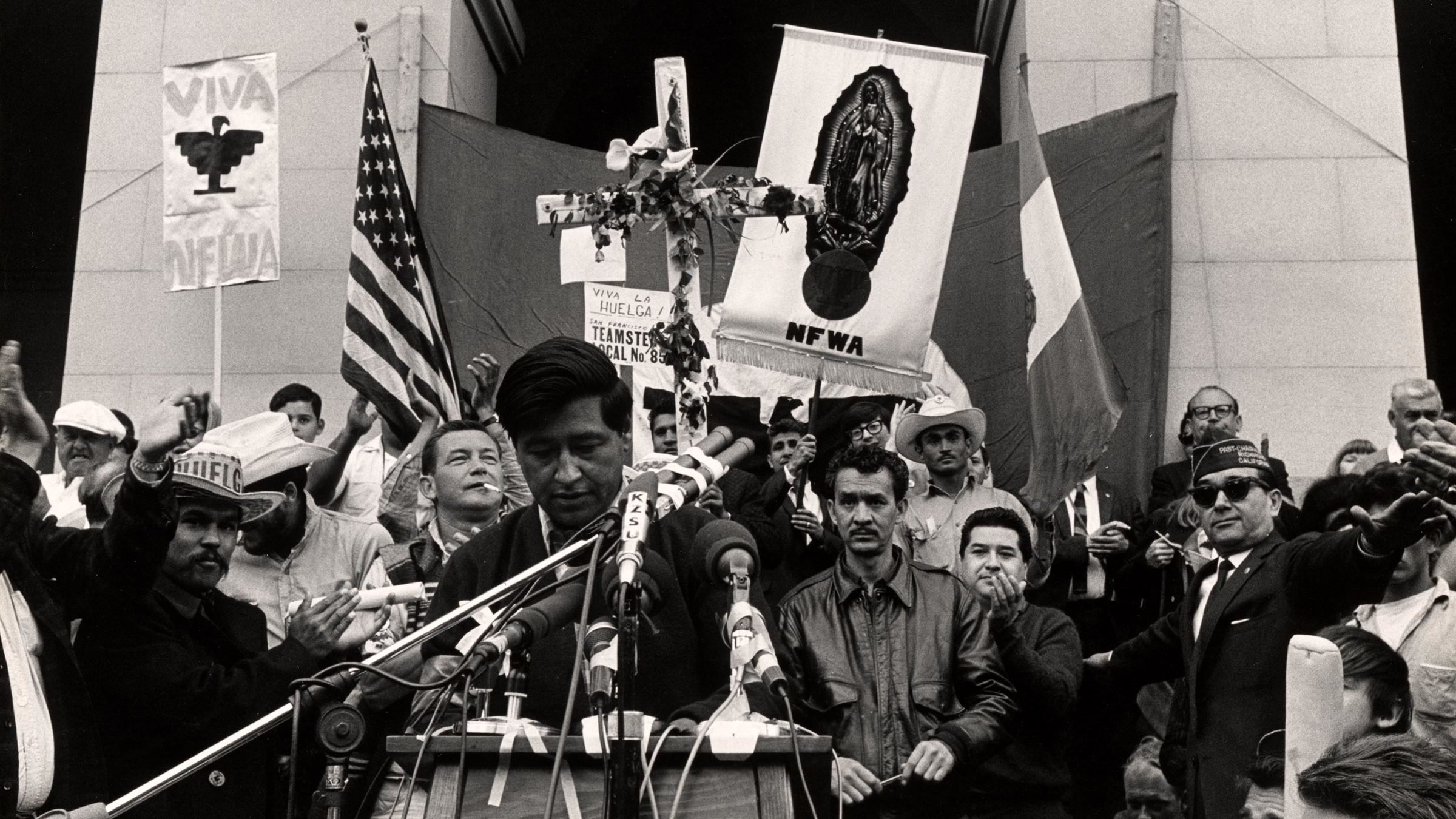

What is the role of protest music in social movements?
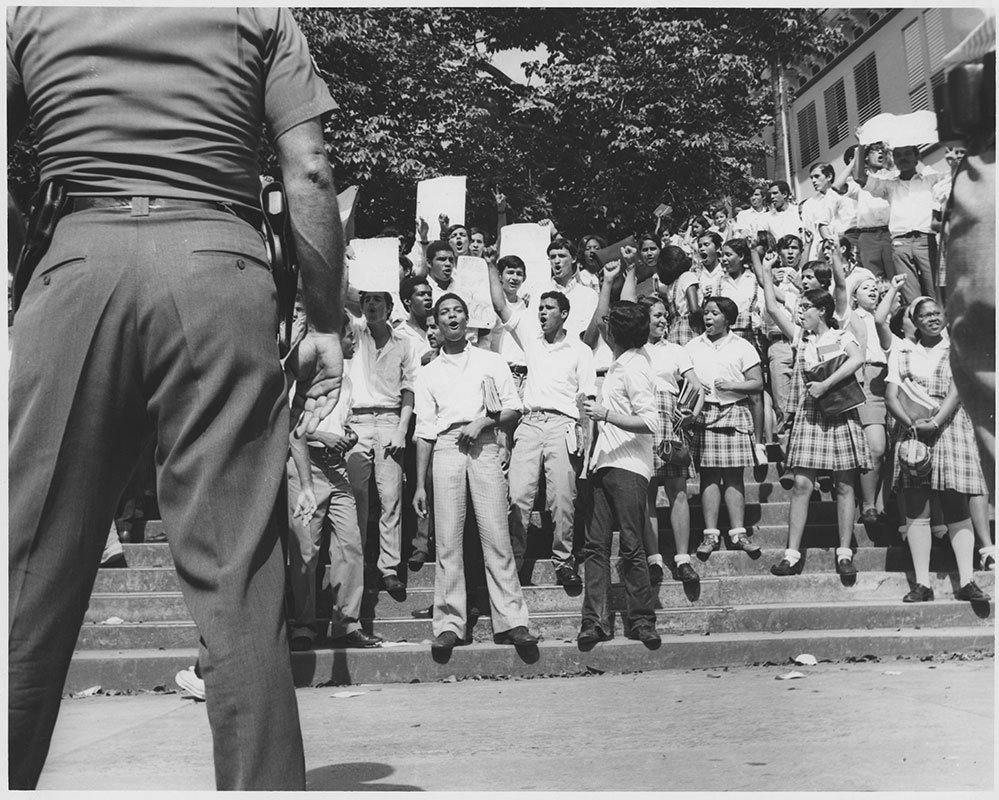
Puerto Rican Independence Fighters, unknown photographer. Ralph Rinzler Folklife Archives and Collections, Smithsonian Institution.
The overarching essential question for Lesson 7 is:

The Power of Protest:
Songs of Struggle and Hope
MUSIC LISTENING
CREATIVE CONNECTIONS
HISTORY & CULTURE

30+ MIN
40+ MIN
10+ MIN
We Shall Overcome
(Nosotros venceremos)
Path 1

30+ minutes

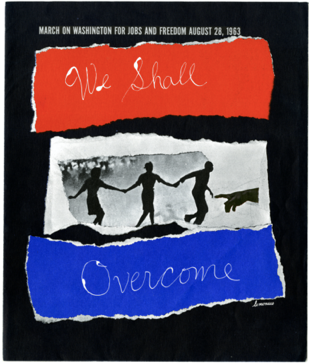
We Shall Overcome, unknown artist. National Museum of American History.

"We Shall Overcome"
"We Shall Overcome" is widely regarded as one of the most famous protest songs of all time. It has been called the "anthem" of the American civil rights movement.
Smithsonian Folkways has numerous recordings of this song in its collection, but today we will focus on three examples.

Singing “We Shall Overcome,” Sixteenth Street Baptist Church, photo by James H. Karales. National Museum of African American History and Culture.
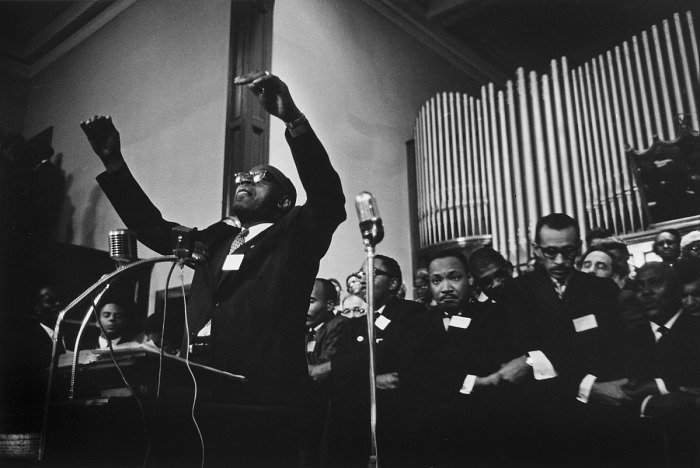
"We Shall Overcome": Example 1

Listen to this recording and write down your observations on the provided worksheet (Part 1).
Performance Context:
- This live version was performed by a vocal ensemble called the Freedom Singers in 1963.
- The Freedom Singers formed as a student quartet in 1962 at Albany State College in Georgia.
- The Freedom Singers frequently sang this song live (sit-ins, marches, meetings, protests, etc.).


The Freedom Singers, photo by Diana Jo Davies. Ralph Rinzler Folklife Archives and Collections, Smithsonian Institution.

Listen to a different recording of the same song. Write down your observations on the same worksheet (Part 1).
Performance Context:
- This live version was recorded live at a mass meeting in Hattiesburg, MS in 1964.
- During the Civil Rights movement, mass meetings were intended to sustain and unify the community and to inspire activism.
- Fannie Lou Hamer, the song leader heard on this recording, was an important leader, activist, and singer during the Civil Rights movement.


"We Shall Overcome": Example 2
Fannie Lou Hamer at 1965 Newport Folk Festival, photo by Diana Jo Davies. Ralph Rinzler Folklife Archives and Collections, Smithsonian Institution.

“We Shall Overcome”: Example 3
Listen to one more recording of this song and write down your observations on the provided worksheet.
Performance Context:
- This studio version was recorded by legendary American folk singer, Pete Seeger in 1964.


Pete Seeger, photo by Sid Grossman. National Portrait Gallery.
How “We Shall Overcome” Became Protest Music:

- In 1947, an educator/musician/activist (Zilphia Horton) heard a group of workers in a tobacco field singing the song we now know as "We Shall Overcome" (it was originally an old spiritual/hymn).
- She taught this song to American folk singer, Pete Seeger.
- Over time, additional verses were added.
- Pete Seeger and Guy Carawan (another folk musician) introduced this song to the Civil Rights movement in the early 1960s and it quickly gained popularity.

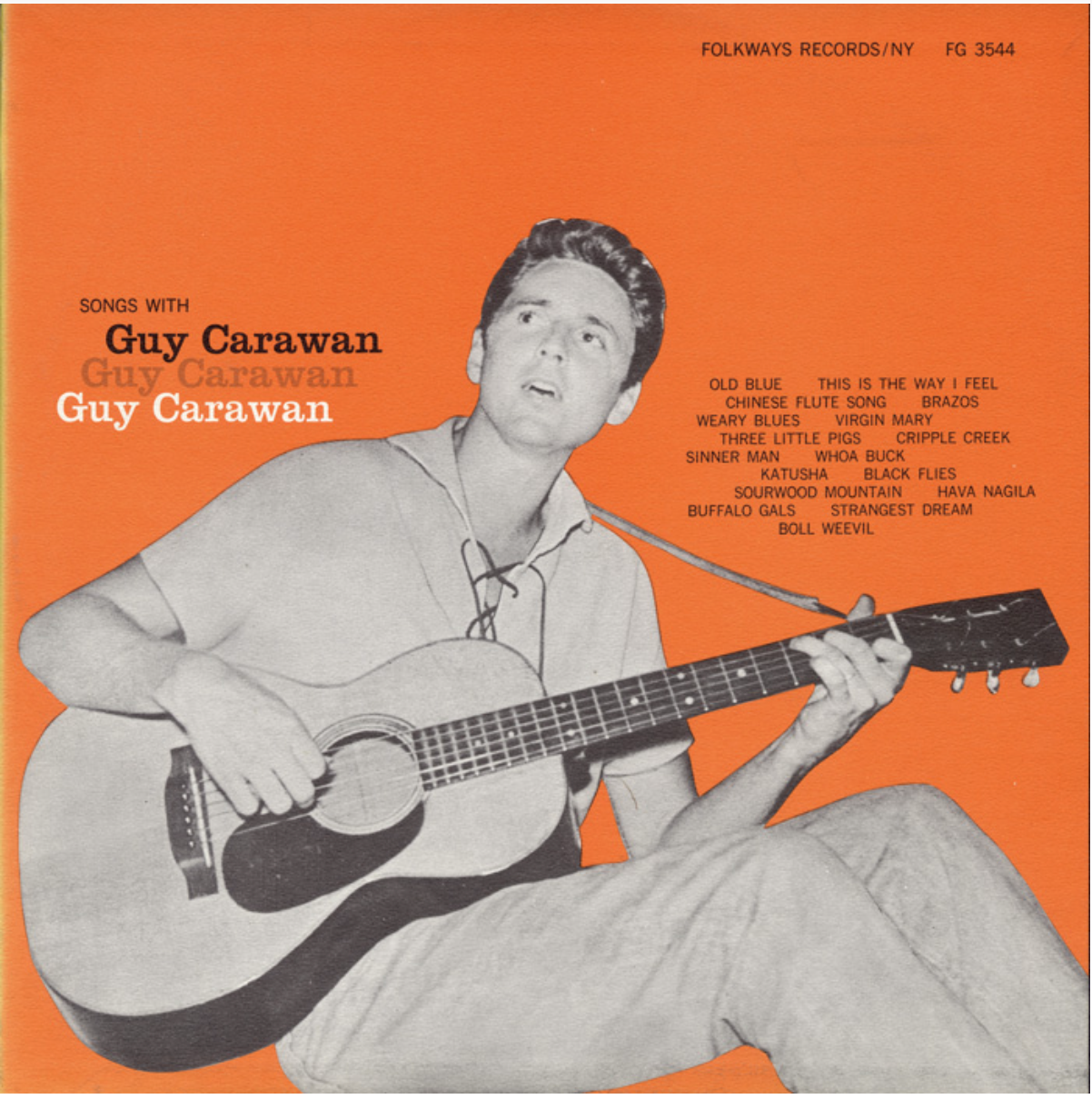
Songs with Guy Carawan, unknown artist. Folkways Records.
“We Shall Overcome” Becomes “Nosotros venceremos”

During the Chicano movement, activists and musicians often translated, adapted, and repurposed songs and slogans from the civil rights movement, including the song “We Shall Overcome.”
The Spanish-language version of this song is called “Nosotros venceremos.”
Viva la causa! Nosotros venceremos!, unknown artist. National Museum of American History.


“We Shall Overcome” Becomes “Nosotros Venceremos”

Repurposed and translated protest songs were sung in a wide variety of Chicano movement contexts (e.g., picket lines, marches, rallies, walk-outs, etc.).
These songs helped people “express struggles and call for social change” (Seeger 2019, p. 16).


Like many other songs that are now associated with the Chicano movement in general, “Nosotros Venceremos” became popularized within the context of the farm workers movement by a music and theater troupe called El Teatro Campesino.
Extension Activity: “Nosotros Venceremos”


El Teatro, photo by Jon Lewis. Smithsonian Folkways Recordings.
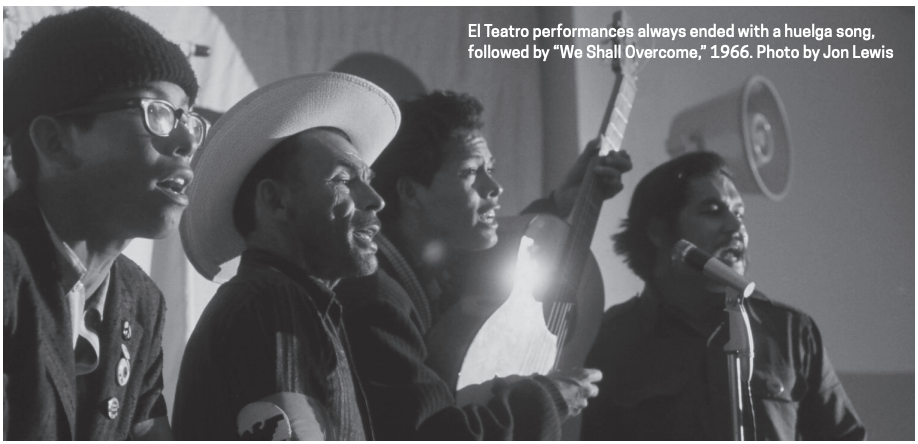
Take a closer look at lyrical excerpts from "We Shall Overcome"/"Nosotros venceremos" and consider the following question:
Why do you think these lyrics resonated with people who were protesting during the Chicano movement?
Provide a written response on your worksheet (Part 2).
Dive Deeper: Lyrics


Exploring Personal Musical Preferences


Today, you listened to three arrangements of "We Shall Overcome."
It is very possible that you preferred one version over the others ... and your preferences might be different than others in your class.
Our personal preferences are affected by many factors ... like personal interests, prior knowledge, musical skills, and past experiences.

Personal Musical Preferences

Provide a written reflection on your worksheet (Part 3).

Which of these three recordings of "We Shall Overcome" did you prefer and why?

Learning Checkpoint
- How was the song "We Shall Overcome" used during the Chicano movement?
- What types of factors can affect our personal musical preferences?

End of Path 1! Where will you go next?






Students in the Chicano Movement
Path 2

40+ minutes


Peace March and Rally, New York City: Crowd of Protesters, photo by Diana Jo Davies. Ralph Rinzler Folklife Archives and Collections, Smithsonian Institution.

Listening for Lyrical Meaning
Listen to a song called "Walk-Out en Crystal City," while following along with the lyrics/translation.
What is this song about?

The Crystal City Walk-Out


As an example of such policies, the school had a quota for the cheerleading squad.
In 1969, a group of high school students in Crystal City, TX staged a walk-out to protest discriminatory and oppressive educational policies.
Even though the school population was 85% Mexican American and 15% Anglo American, the cheerleading squad allowed only one Mexican American cheerleader.
Students Posed Around High School Sign During a Boycott in Crystal City, Texas on Dec. 22, 1969, unknown photographer. UTSA Special Collections.
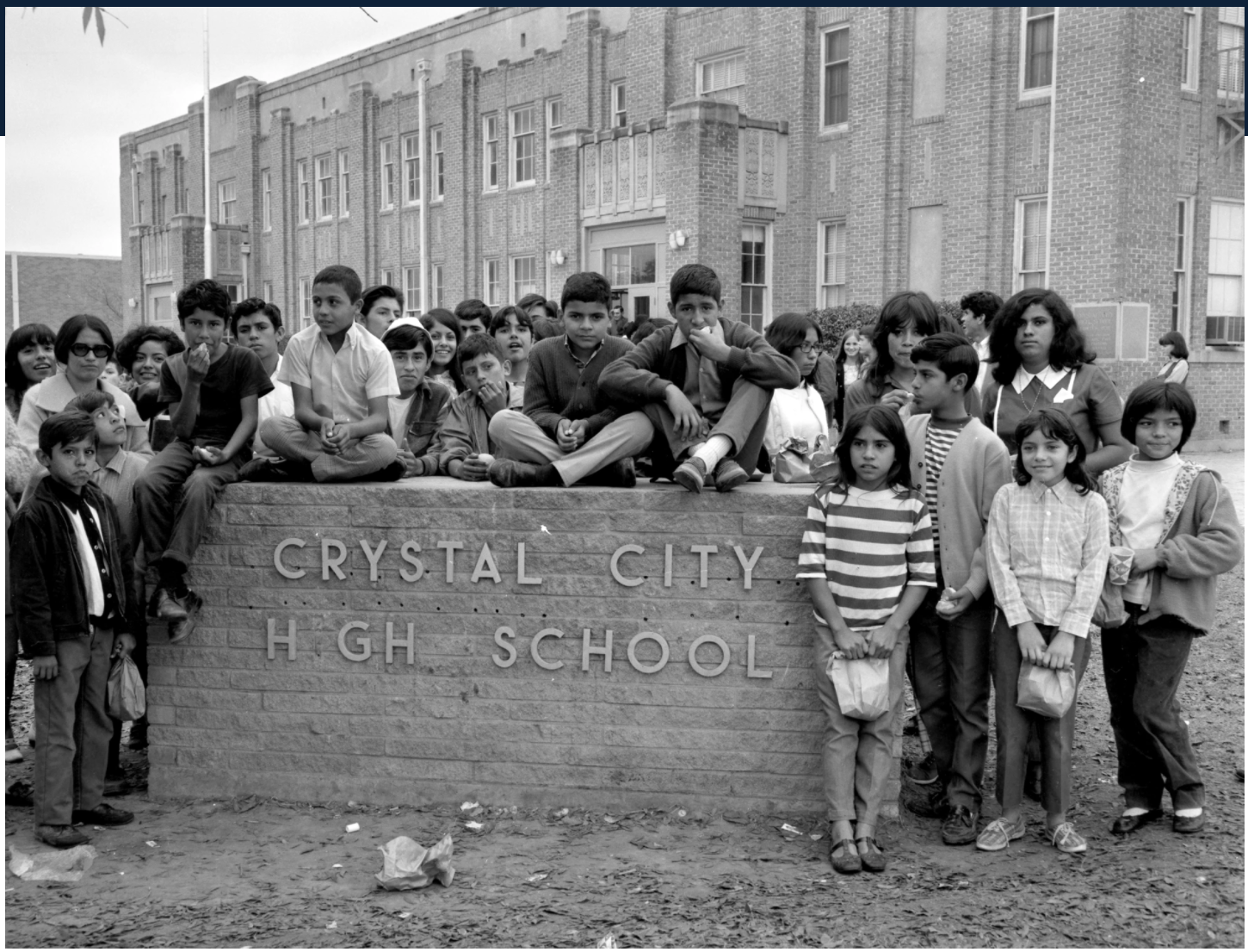

After the Crystal City Walk-Out
The Crystal City Walk-out was ultimately successful in several important ways:
- The school board changed policies regarding extracurricular activity participation.
- More diverse/relevant courses were added to the curriculum.
- More Mexican American teachers and administrators were hired.
- Free and reduced lunch programs were expanded.
- This event also generated publicity and sparked further political action.
- Eventually, Mexican Americans won a majority of seats on the Crystal City school board.

Student Walkout in Crystal City, Texas on Dec. 20, 1969, unknown photographer. UTSA Special Collections.
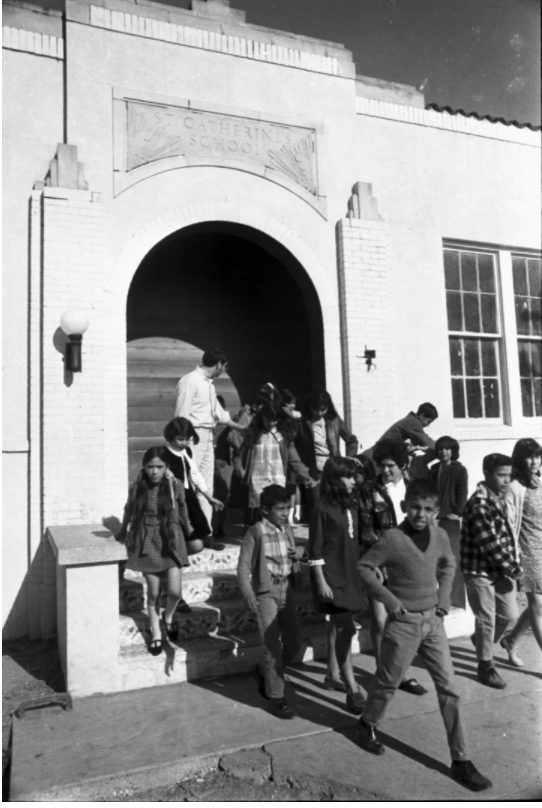

“Walk-Out en Crystal City”
In 1972, Rumel Fuentes recorded an original corrido, memorializing this historic event (which you just heard).
Discuss:
- Did the students at Crystal City High School assume any risks by “walking out”? If so, what were they?
- What risks would you be taking if you staged a “walk-out” at your school?

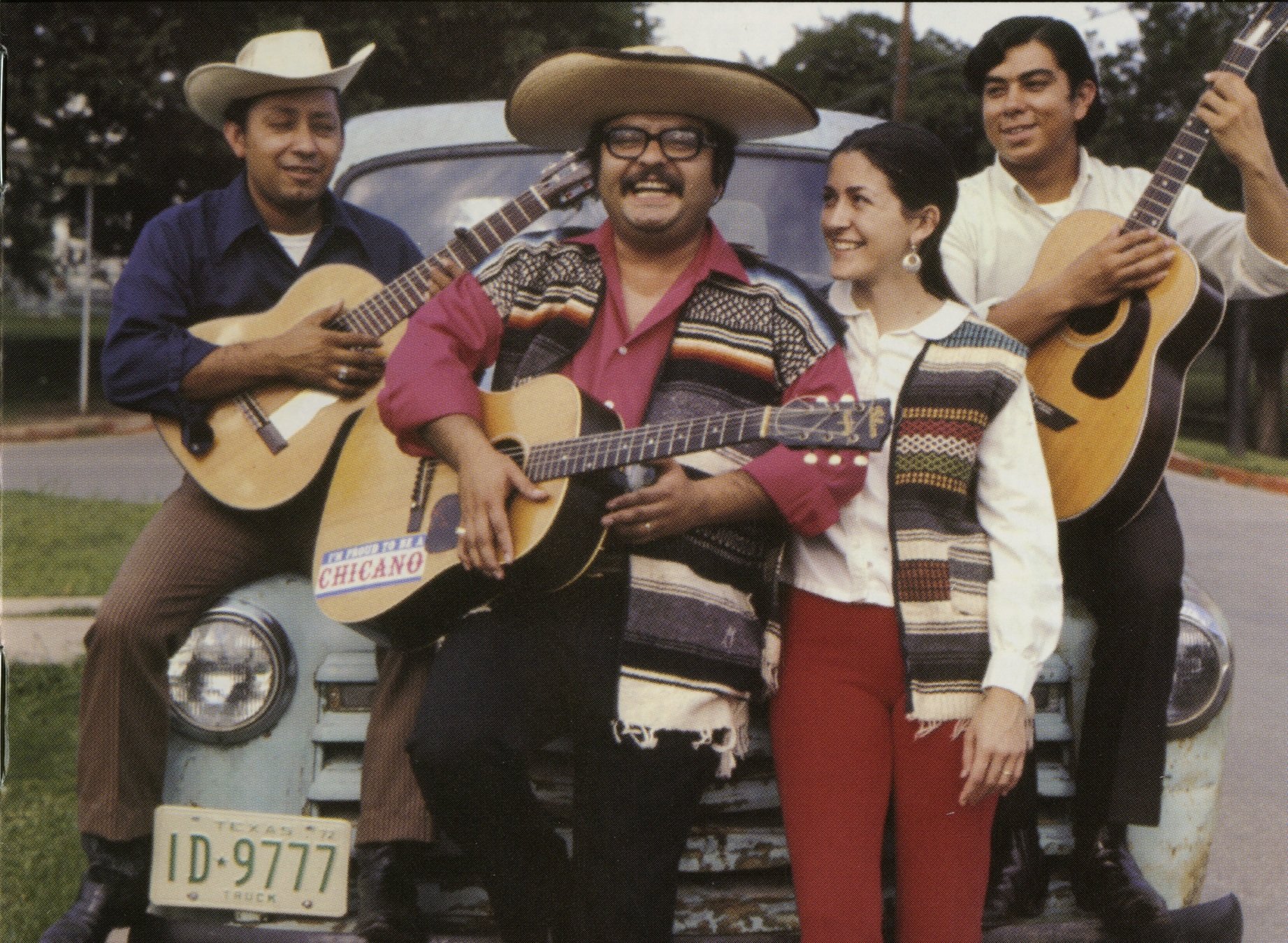
Rumel Fuentes, photo by Chris Strachwitz. Arhoolie Records.

Students in the Movement

During the Chicano movement, some of the most powerful examples of protest were provided by young people, primarily students.
In many cases, students were protesting educational policies and practices that were discriminatory and/or oppressive.
Student Protest T-Shirt, unknown artist. National Museum of American History.
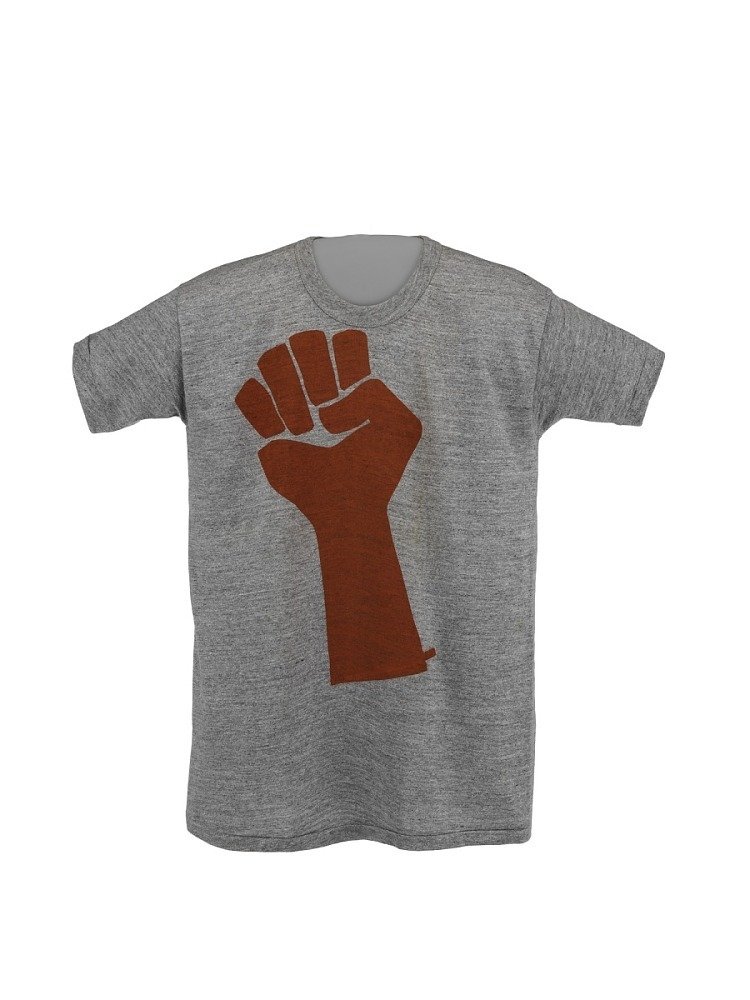

Adding Historical Context: The Brown Berets
In some ways, the Brown Berets were inspired by the Black Panthers, a political organization for self-defense associated with the African American community.

Black Panthers, photo by Mark James Powers. National Museum of American History.

The Brown Berets, a student-led self-defense organization that originated at a high school leadership conference, was one of the most militant groups that emerged during the Chicano movement.
Adding Historical Context: Che Guevara


The Brown Berets were also inspired and influenced by Che Guevara, an Argentinian freedom fighter, viewed “as a defender of the poor who was willing to rise up in arms against oppression and tyranny” (Montoya 2016, p. 117).
You Are Not a Minority!! by Mario Torero. Smithsonian American Art Museum.
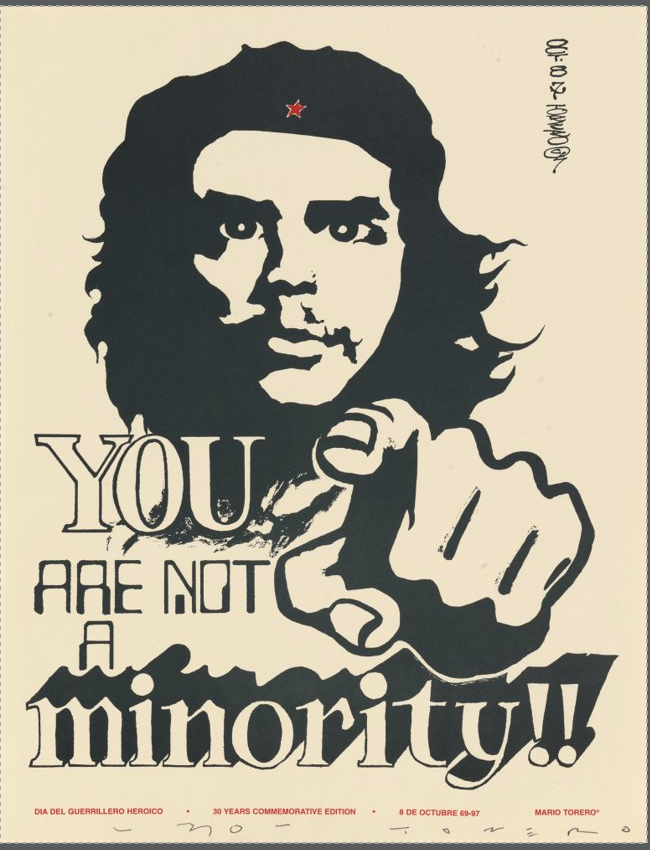
Adding More Historical Context: The East L.A. Walk-Outs

They articulated a variety of demands, such as bilingual education, more community control of the educational system, and the end of vocational tracking.


Rally at Placita Park, photo by Luis C. Garza. UCLA Chicano Studies Research Center.
In 1968, thousands of high-school students (predominantly Mexican American students) in Los Angeles decided to protest “the abysmally poor educational conditions affecting their schools” (Rosales 1997, p. 185) by staging a walkout.
Adding More Historical Context: The East L.A. Walk-Outs



Members of the Brown Berets showed up at the East L.A. Walk-Outs to protect young demonstrators from police brutality (which may have increased police aggression).
“The situation quickly escalated into outright violence, as officers of the LAPD were captured on film brutally beating student demonstrators” (Montoya 2016, p. 108).

The "East L.A. 13" and Sal Castro
Sal Castro, photo by George Rodríguez. National Portrait Gallery.


13 organizers of the walkouts (students, Brown Berets, and high school teacher, Sal Castro) were arrested and charged with conspiracy to disturb the peace.
Ultimately, all charges were dropped against the “East L.A. 13.”
Castro was exonerated and reinstated to his teaching position.
In 2010, the school where Sal Castro taught for 43 years was named after him.
Legacy of the East L.A. Walk-Outs


The East L.A. walkouts were important, both in terms of the sheer numbers of schools, students, teachers, and parents who were affected and the publicity they generated.
The walkouts “demonstrated to students in other parts of the country that they, too, could demand change” (Montoya 2016, p. 111–112).


Students Making a Difference
This provided additional opportunities for Chicana/o students to make their voices heard through music.

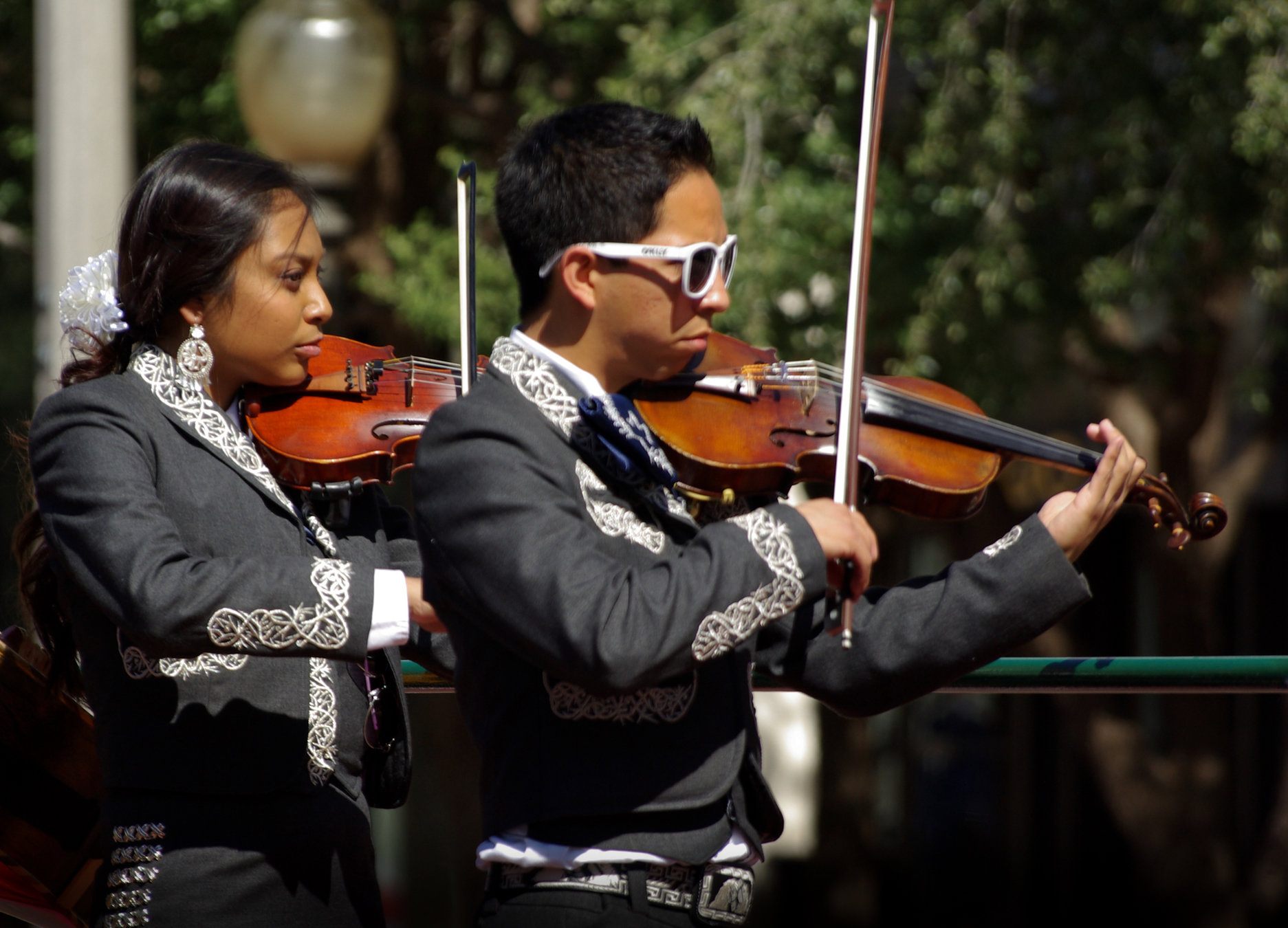
Mariachi Violinists, photo by Larry Wilmot. Dreamstime.
Following the student walkouts and youth activism events of the late 1960s, more Mexican Americans attended college than ever before.

Attentive Listening: "No nos moverán"
Listen to a short excerpt from this recording of a student music ensemble from San Diego State University (La Rondalla Amerindia de Aztlán) performing the popular protest song "No nos moverán" ("We Shall Not Be Moved").
As you listen, think about this guiding question:

What instruments do you hear?
Rondalla as Activism and Protest


La Rondalla Amerindia de Aztlán, photo by Carlos LeGerrette. UC San Diego Library, Farmworker Movement Special Collection.
This type of music ensemble is called a rondalla: A large guitar ensemble that typically performs romantic and popular songs.
Since 1969, La Rondalla Ameríndia de Aztlán has transformed the rondalla into a vehicle for student activism and social protest.
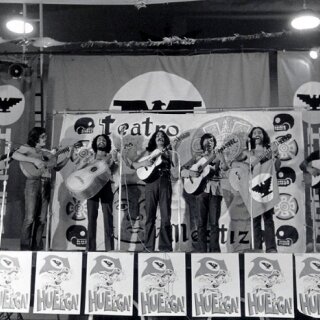

About the Song: "No nos moverán"

- Originally, "No nos moverán" was an African American spiritual ("I Shall Not Be Moved").
- "No nos moverán" is a protest song that gained popularity during the Chicano movement after it was translated and adapted from a different context.
- It became a popular "anthem" within the context of the U.S. Labor and Civil Rights movements.
- During the Chicano movement, musicians translated and adapted the lyrics of this song to reflect what was happening during the farm workers strike, specifically, and the Chicano movement, more generally.

What makes a good protest song?
Listen to an excerpt from this recording again, while thinking about this question.


A good protest song . . .

. . . pushes past simply describing a struggle, and “has an additional element of protest or confrontation and change” (Seeger 2019, p. 17).
- The lyrics of the song "No nos moverán" encourage and motivate people to keep fighting (and to never give up).

What makes a good protest song?

"No nos moverán" utilizes call and response form.
- Call and response form makes it easy for audience members to participate.
- Call and response form also allows freedom for people to easily add and change verses to match the context.

What makes a good protest song?

Good protest songs have simple messages that people care about and are easy to learn by heart.
- They have catchy melodies and repeated lines/choruses that are easy to remember.

Engaged Listening: "No nos moverán"
Listen again. This time, try to sing along with the voices on the recording every time you hear them sing the title of the song (the “response”!)
The English translation of the calls are:
- United in the strike…
- United in the struggle…
- United we will triumph…


"We Shall Not Be Moved"

Next, listen to a live, sing-along performance of the English-language version of this song, led by American folk singer, Pete Seeger.
As you listen, make note of the social themes Pete refers to during his "calls."

Pete Seeger, photo by Sid Grossman. National Portrait Gallery.
"We Shall Not Be Moved" Themes (Pete Seeger's version)


Unity, Acceptance, Tolerance, Solidarity, Equal rights, Anti-nuclear weapons:

- Young and old together
- Women and men together
- City and country together
- Black and white together
- Straight and gay together
- No-nukes is good nukes
- Split wood, not atoms
Creative Activity


Think of a social issue you care about . . .
Can you write a call about it?
Examples:
“We must feed the hungry” (we shall not be moved)
“All should have clean water” (we shall not be moved)
“Let’s be kind to others” (we shall not be moved)

Learning Checkpoint
- How did students make a difference during the Chicano movement? Name two examples.
- What makes a good protest song?

End of Path 2! Where will you go next?






Create a Protest Playlist
Path 3

10+ minutes

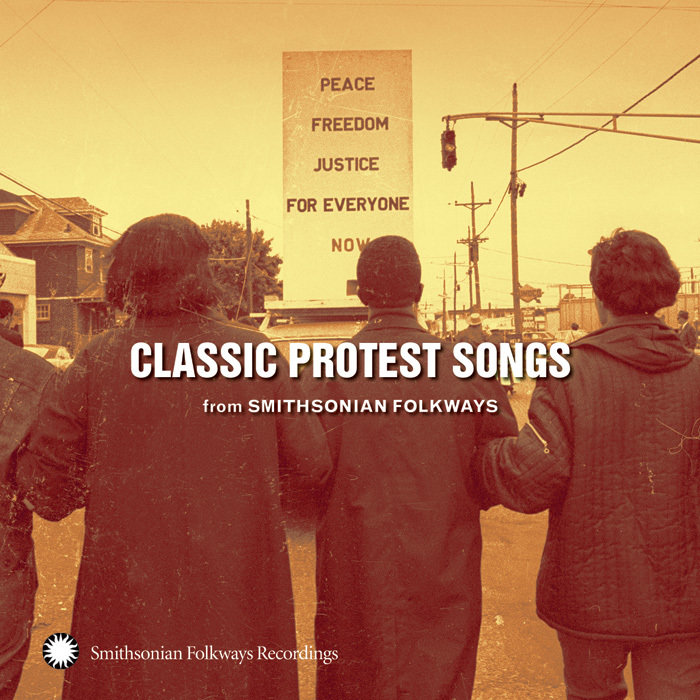
Classic Protest Songs, cover art by Communication Visual. Smithsonian Folkways Recordings

What is a protest song?

A protest song pushes past simply describing some sort of struggle/injustice and advocates some sort of action . . . It “has an additional element of protest or confrontation” (Seeger, 2019, p. 17) and conveys a powerful message with musicality and conviction.


Creating a Protest Playlist
In this activity, you will create an annotated protest playlist and evaluate your chosen songs’ effectiveness as protest songs.
Step 1: Make a list of at least five protest songs that matter to you – they can be from an era and about any topic


Creating a Protest Playlist

Step 2: Identify and explain the theme of each of the songs you selected.
What is being protested?

Creating a Protest Playlist

Step 3: On your worksheet, identify the ways in which the elements of music and expressive qualities were utilized by song-writers/performers in the songs you selected.

Creating a Protest Playlist

Step 4: Evaluate each song’s effectiveness as a protest song.
Remember, a good protest song:
- Has a simple message that people care about
- Is repetitive and easy to learn/remember
- Has a catch melody
- Motivates/inspires people to be changemakers
- Is fluid (people could easily change the lyrics or add a new verse)

Creating a Protest Playlist

According to the criteria discussed throughout this lesson, which of the five songs on your list makes the best protest song?

Learning Checkpoint

- What makes a song a protest song?
- What criteria can we use to evaluate the effectiveness of a protest song?
End of Path 3 and Lesson Hub 7! Where will you go next?







Lesson Hub 7 Media Credits

Audio courtesy of
Smithsonian Folkways Recordings
Images courtesy of
The Arhoolie Foundation
TM/© 2021 the Cesar Chavez Foundation. www.chavezfoundation.org
National Museum of African American History and Culture
National Museum of American History
National Portrait Gallery
Ralph Rinzler Folklife Archives and Collections
Smithsonian American Art Museum
Smithsonian Folkways Recordings
UCLA Chicano Studies Research Center
UTSA Special Collections
Larry Wilmot

© 2021 Smithsonian Institution. Personal, educational, and non-commercial uses allowed; commercial rights reserved. See Smithsonian terms of use for more information
This Lesson was funded in part by the Smithsonian Youth Access Grants Program with support from the Society for Ethnomusicology and the National Association for Music Education.
For full bibliography and media credits, see Lesson 7 landing page.

